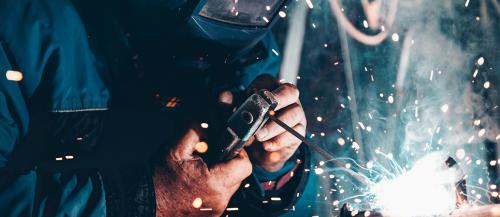Wire is the word here at BS Fixings right now as representatives from our company are at Dusseldorf WIRE 2018, the world's premier wire trade fair (Hall 14, Stand B59). One of the most important uses of stainless steel wire is for TIG welding and, as this type requires more practice than ARC or MIG welding in order to become confident and proficient at the skill, here we present you with five essential tips to improve your practice.
- TIG welding wire functions optimally with a very clean working surface, allowing clean arcs and precise welds to be achieved. As with any construction project, preparation is everything and taking the time to thoroughly clean the working area will lead to cost- and time-savings later on. A dedicated brush for each type of metal is recommended to avoid cross-contamination, particularly from rust particles.
- Depending on the surface to be worked upon, you may need to change the tungsten - green is traditionally used for aluminium while red is used for steels though many companies have opted purely for red regardless of the metal to be welded. Tungsten is the Goldilocks of the welding world: too large and warping/burning of the workpiece becomes a risk while too small causes overheating and damage to the tungsten itself - it has to be just right!
- If the sharp tungsten tip hits the puddle, even for a fraction of a second, it MUST go through a regrinding process - no exceptions - as it will have suffered splitting. If not reground, the tip will cause the arc to wander and become unfocused due to the contamination, jeopardising the entire weld.
- Learning TIG welding techniques requires concentration and interruptions will not help at all. Reduce these by following such simple measures as having extra ground tungstens and filler rod closed at hand and keeping any pieces waiting to be welded nice and clean.
- A common rookie mistake is incorrect grinding - be sure you grind it lengthways, keeping it as even as you can - grinding the other way will cause unpredictable arcs. A tungsten sharpener is recommended though, if a bench grinder must be used, it should only be used for grinding tungstens to avoid cross-contamination.
Check out our range of TIG welding wire — its many qualities will further help you in your growing understanding of the essential technology.






